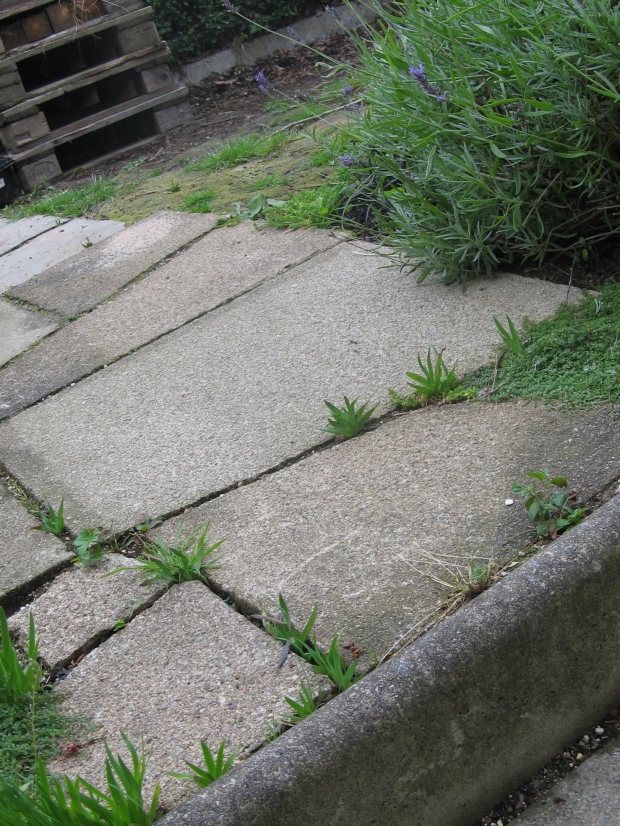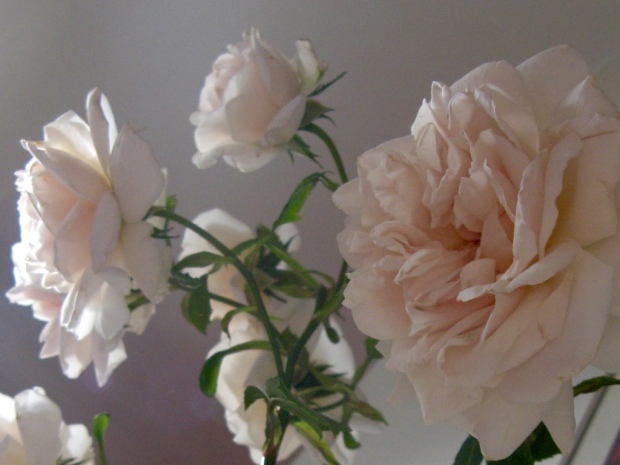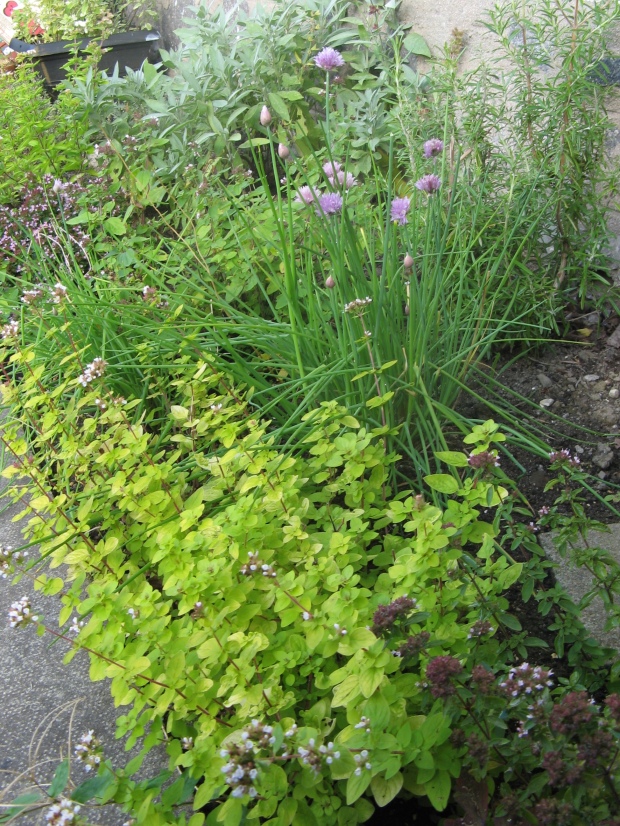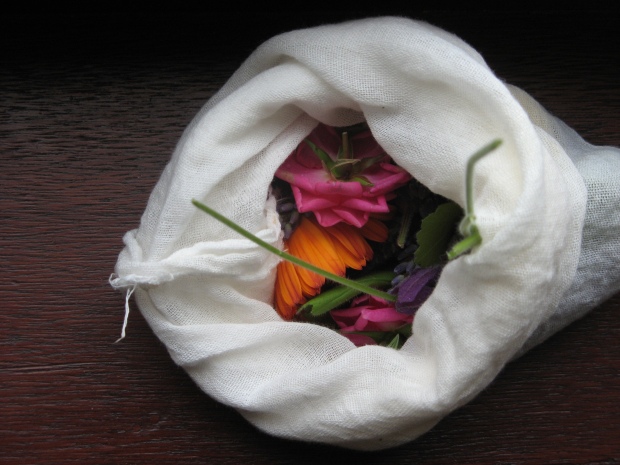This post continues my series on the challenges of my garden. You can read about the first challenge here and here (in that order).
When we first moved into our flat, I had a clear idea about how I wanted this garden project to go… simply, I wanted to get plants and trees in the ground ASAP so that we could begin to reap the harvest ASAP. I got a few things in the ground, and then our boiler died. And then our washing machine. The oven broke. And we discovered that the fridge was keeping a rather tropical temperature. In short, it has not been a good summer for our whiteware or the pocketbook.
However, my whole adult life has been a rather frugal existence and living with less over the years has given me some creative insight for working on all sorts of projects, including this garden project. There are definitely some sucky things about working within a narrow budget, and I won’t get into those because they are probably fairly obvious (and to be clear, I am talking about a narrow budget, NOT poverty). But here are some of the “up sides”:
First of all, parameters (including financial constraints) are helpful for the creative process. When I was at architecture school, occasionally people would ask what my dream home would be like if money were no object and any location possible. I never had an answer. While I love looking at plans for imaginative places and worlds, I find it hard to think of real projects (like a home to live in) without wondering what its real constraints would be. As with poetry, some of the most beautiful and creative architectural projects I have seen are ones that were made within extremely strict constraints.
I believe this is because a creative project tells its maker what it hopes to be. It speaks through available resources (including materials, budget, skills, etc), the site in question, and the intended use of the finished project. It is somewhat of a spiritual practice to pause and to be open to these things before designing. It is a contemplative practice to “listen” to these things whilst making, in the way that a carpenter is guided by the texture and grain of the wood she works with or a sew-er works with her fabric’s drape and texture to create a beautiful garment.  In the same way, our budget has creative implications for our garden. Our financial constraints (among other things) are showing us how our garden will look and come about. For example, we wanted to pave an area in our front garden for outdoor eating, and we were grateful when a neighbour said that we could take her cracked old pavers that were sitting in a heap. Their broken edges suggested which other broken edges they could be lined up with. The size of our table+chairs instructed how large the level area should be before it could slope away to the garden path. My partner shifted them around like weighty puzzle pieces, until they matched up and looked as though they’d been in our front garden forever.
In the same way, our budget has creative implications for our garden. Our financial constraints (among other things) are showing us how our garden will look and come about. For example, we wanted to pave an area in our front garden for outdoor eating, and we were grateful when a neighbour said that we could take her cracked old pavers that were sitting in a heap. Their broken edges suggested which other broken edges they could be lined up with. The size of our table+chairs instructed how large the level area should be before it could slope away to the garden path. My partner shifted them around like weighty puzzle pieces, until they matched up and looked as though they’d been in our front garden forever.
Indeed, this approach is a playful one, and humans are at their most creative when playing. Although the “rules of the game” (in this case, cracked pavers, area needed, amateur paver… all implications of a tight budget ) are quite clear, play allows us to go beyond these constraints, to work around them… and this is where creative surprises occur. For our paving, the main surprises were the beautiful, wavy edge that meets the grass (or rather, our grass of the future) on one side and garden on the other, and the chance now to grow things in the grout between the pavers. You can see some creeping thyme and opportunistic sisyrinchium coming up in the picture.
Now, I am not so punk that I am completely against quality materials (although I would argue that found, inexpensive, or second-hand materials can be good quality too) or employing expertise, and there are certainly times when those are called for. We could have spent money on new flagstones or bricks, and then we would have also wanted to pay someone with the skills to come and lay them. But… budget… remember? We like the result. It looks good to us, it does the job, and it seems like it will last. And had we not done it ourselves, we would not have had the fun of the creative moment.


 In the same way, our budget has creative implications for our garden. Our financial constraints (among other things) are showing us how our garden will look and come about. For example, we wanted to pave an area in our front garden for outdoor eating, and we were grateful when a neighbour said that we could take her cracked old pavers that were sitting in a heap. Their broken edges suggested which other broken edges they could be lined up with. The size of our table+chairs instructed how large the level area should be before it could slope away to the garden path. My partner shifted them around like weighty puzzle pieces, until they matched up and looked as though they’d been in our front garden forever.
In the same way, our budget has creative implications for our garden. Our financial constraints (among other things) are showing us how our garden will look and come about. For example, we wanted to pave an area in our front garden for outdoor eating, and we were grateful when a neighbour said that we could take her cracked old pavers that were sitting in a heap. Their broken edges suggested which other broken edges they could be lined up with. The size of our table+chairs instructed how large the level area should be before it could slope away to the garden path. My partner shifted them around like weighty puzzle pieces, until they matched up and looked as though they’d been in our front garden forever. Gathered some herbs this week to make a (giant) bath “tea-bag” as a gift for friend. This relaxing one has calendula, rose, rose geranium, and lavender. Oats would be a gentle addition. Also tied up some peppermint and rosemary for a refreshing shower (just hang from the shower head and let the steam do the work). You can find
Gathered some herbs this week to make a (giant) bath “tea-bag” as a gift for friend. This relaxing one has calendula, rose, rose geranium, and lavender. Oats would be a gentle addition. Also tied up some peppermint and rosemary for a refreshing shower (just hang from the shower head and let the steam do the work). You can find